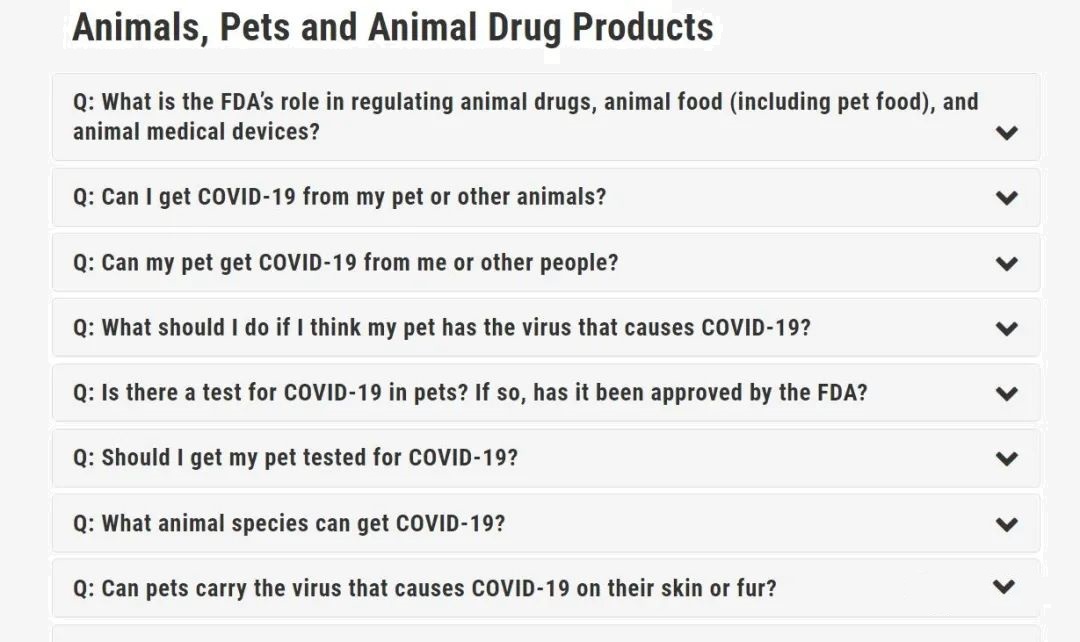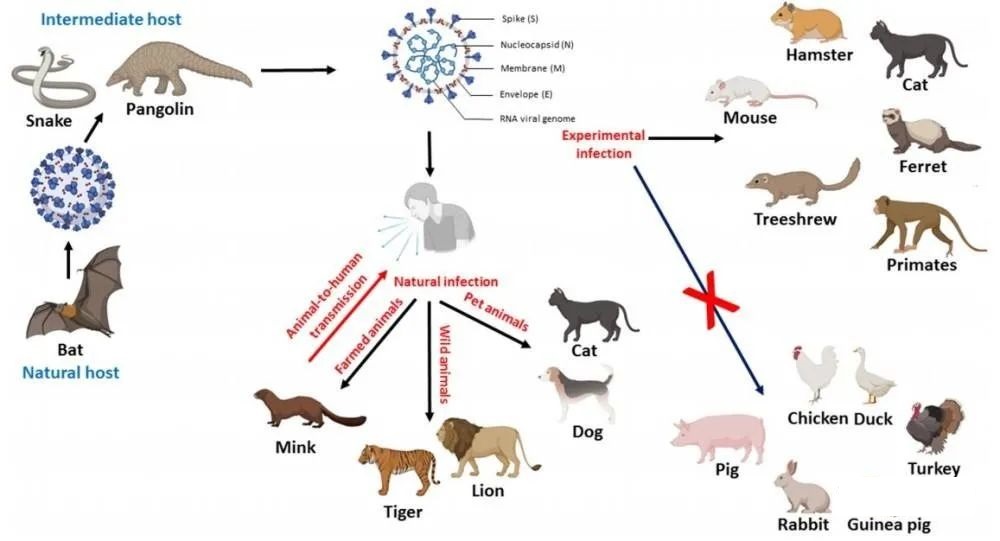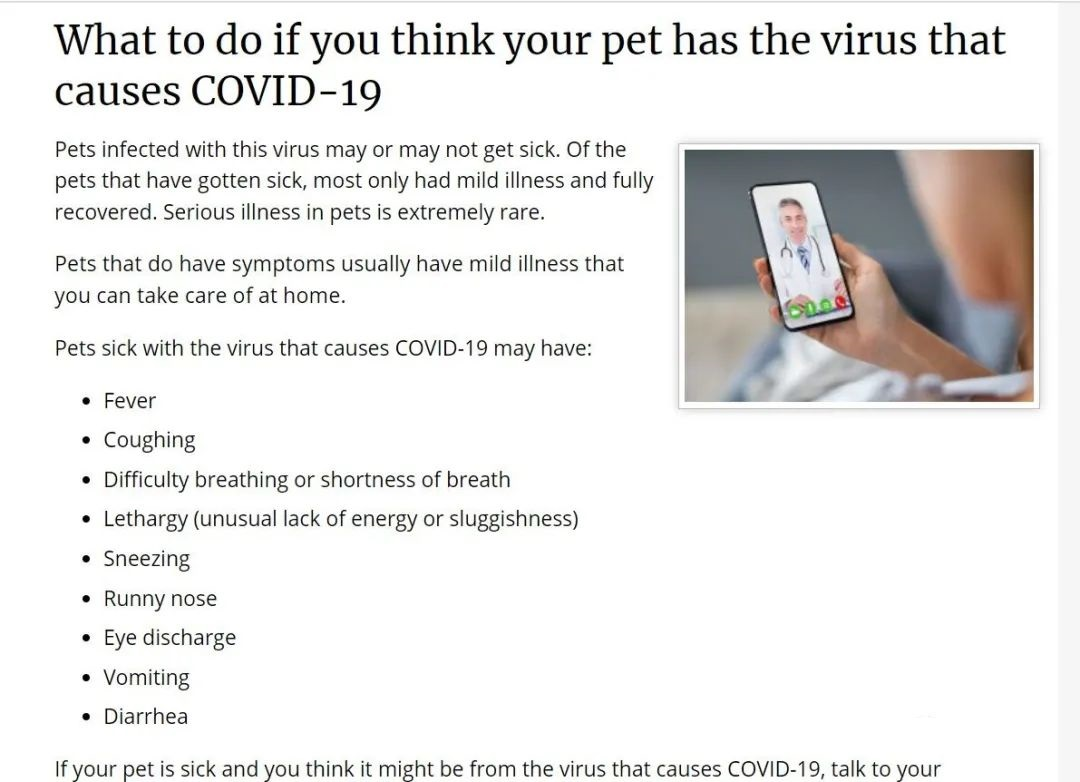Look at pets and COVID-19 scientifically
In order to face the relationship between viruses and pets more scientifically, I went to the websites of FDA and CDC to check the contents about animals and pets.
According to the content, we can roughly summarize two parts:
1. which animal may infect or spread COVID-19? How many possibilities or ways can it be transmitted to people?
2.What are the symptoms of pet infection? How to treat?
Which pets will be infected with the COVID-19?
1、What animal and pets may infect or spread COVID-19? In terms of pets, it has been proved that very few cats, dogs and ferrets may be infected after close contact with pet owners infected with the new crown. Large cats and primates in the zoo are vulnerable to infection, including lions, tigers, pumas, snow leopards, gorillas and so on. It is suspected that they were infected after contacting zoo employees infected with the virus.
Laboratory animal infection tests most animal mammals can infect COVID-19, including ferrets, cats, dogs, fruit bats, voles, mink, pigs, rabbits, raccoons, tree shrews, white tailed deer and golden Syria hamsters. Among them, cats, ferrets, fruit bats, hamsters, raccoons and white tailed deer can spread the infection to other animals of the same species in the laboratory environment, but there is no evidence that they can transmit the virus to humans. Dogs are less likely to be infected with viruses than cats and ferrets. Chickens, ducks, guinea pigs and pigs do not seem to be infected directly by COVID-19, nor do they transmit the virus.
Many articles focus on pet infection COVID-19. According to the investigation and research of the CDC, pets may indeed be infected by sick pet owners due to excessive intimacy. The main transmission methods are kissing and licking, sharing food, caressing and sleeping in one bed. People who infect COVID-19 from pets or other animal are few, and can be ignored.
At present, it is impossible to determine how people are infected by animals, but experiments have proved that pets are unlikely to pass the virus to people through caressing and kissing by skin and hair. More likely, it is some frozen pet food. Many imported cold chain foods are the hardest hit areas of infection. Dalian and Beijing have appeared many times. Many regions require that “it is not necessary to buy food from abroad”. Some imported pet foods are made by rapid freezing method without high-temperature sterilization, This makes it possible to freeze the virus in the process of sorting and packaging food.
“Symptoms” of pet infection with COVID-19
Since pet infection can be ignored, the important concern is the health of pets themselves. It is very foolish and wrong in some parts of the country to kill pets from infected families indiscriminately.
Most pets who are infected with COVID-19 will not get sick. Most of them are only mild symptoms and can recover completely. Serious illness symptoms are extremely rare. The United States is the country with the largest number of new coronavirus infections and the largest number of pets. FDA and CDC have released the introduction of new coronavirus infection for pets. If pets are infected with new coronavirus, it is recommended to take care of them at home. Possible symptoms include fever, cough, dyspnea, drowsiness, sneezing, runny nose, increased eye secretion, vomiting and diarrhea. Generally speaking, you can recover without treatment, or use interferon and take drugs according to symptoms.
If a pet is infected, how can it recover? When the pet does not have the prescribed CDC treatment for 72 hours; 14 days after the last positive test or the test result is negative;
Given the low probability that animal and pet infect COVID-19, do not listen to rumors, don’t wear masks to pets, and masks may hurt your pets. Don’t try to bathe and wipe your pet with any chemical disinfectant, hand sanitizer, etc. Ignorance and fear are the greatest enemies of health.
Post time: Feb-11-2022



